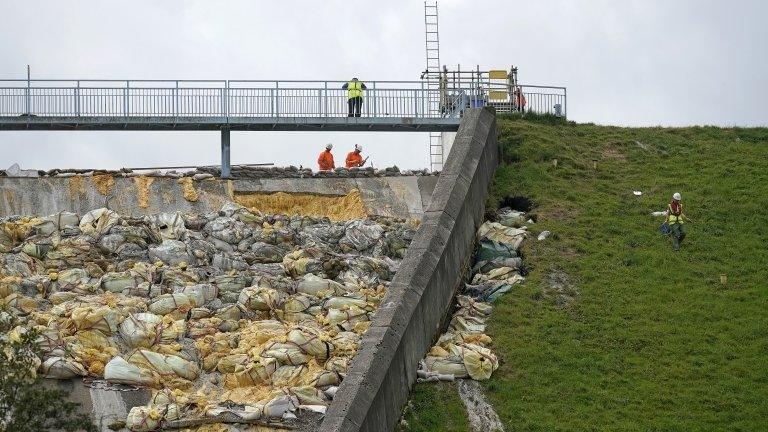Whaley Bridge reservoir collapse: Lack of maintenance 'exacerbated' problem
- Published
Whaley Bridge: How events unfolded
The collapse of a dam which almost flooded Whaley Bridge was caused by poor design and a lack of maintenance, an official report has found.
An engineer had inspected Toddbrook Reservoir and warned its owners about problems with the auxiliary spillway just months before it collapsed.
However, the owners, the Canal and River Trust, had not done any repair work by the time of the collapse.
The trust claimed it is "acting on all the lessons learnt from this incident".
In his report, external, Prof David Balmforth's overall finding was that the collapse was caused by "poor design of the spillway, exacerbated by intermittent maintenance over the years which would have caused the spillway to deteriorate".
He wrote: "With consistent good quality maintenance over the years leading up to the event the spillway may not have failed.
"However, it would have been unlikely to survive the probable maximum flood which is many times greater than the flood in which it failed."
The auxiliary spillway collapsed following heavy rain between 27 July and 1 August.
A full-scale emergency was declared, and 1,500 people were evacuated from the town of Whaley Bridge immediately downstream.
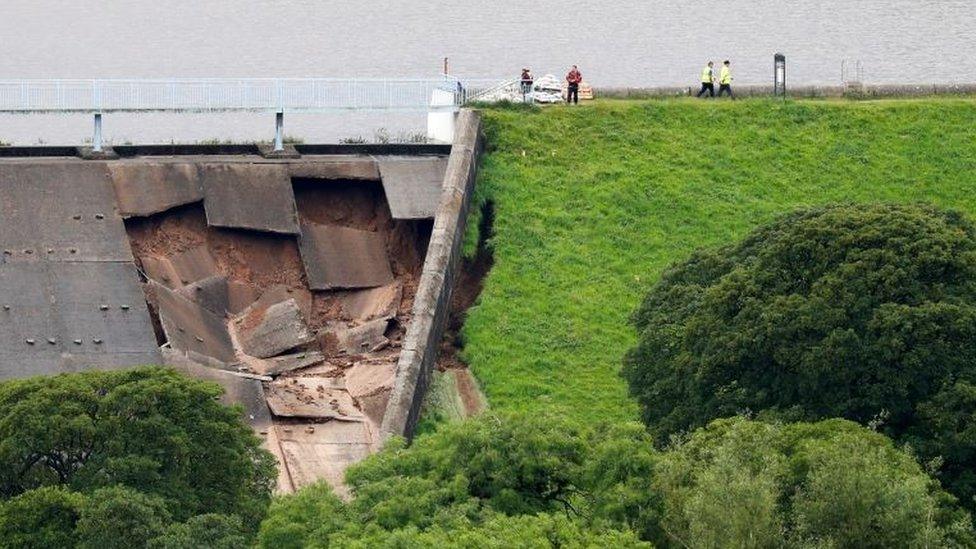
The auxiliary spillway was built between 1969 and 1970
The reservoir and dam had been inspected by the Canal and River Trust (CRT) in November 2018, and separately by an independent inspecting engineer.
The independent engineer submitted a report to the CRT in April asking for vegetation to be removed and for joints and cracks to be repaired.
"He was clearly concerned over the spillway, identifying the risk it posed to the safety of the reservoir as being both 'significant' and 'credible'," Prof Balmforth's report states.
The inspecting engineer required the CRT to complete repair work within 18 months.
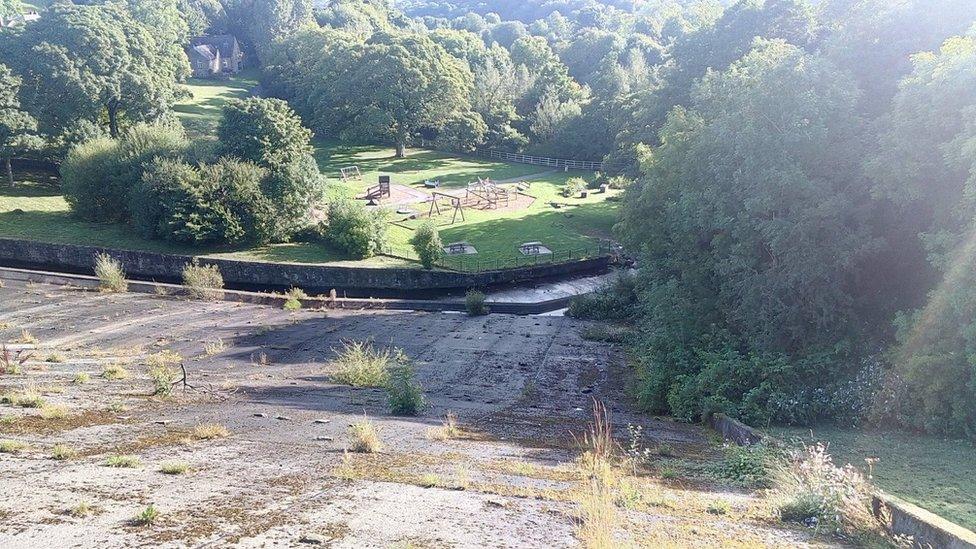
Photos showed vegetation growing from the spillway and prompted residents' concerns
People living near the reservoir have previously raised concerns about maintenance of the dam and shared photos of vegetation growing from the auxiliary spillway.
Prof Balmforth said this "extensive plant growth" in cracks and joints suggested there were "open passageways to the embankment underneath".
He said the "most likely sequence of events" was that water got in through some of these cracks, lifted the slabs and caused a void to develop.
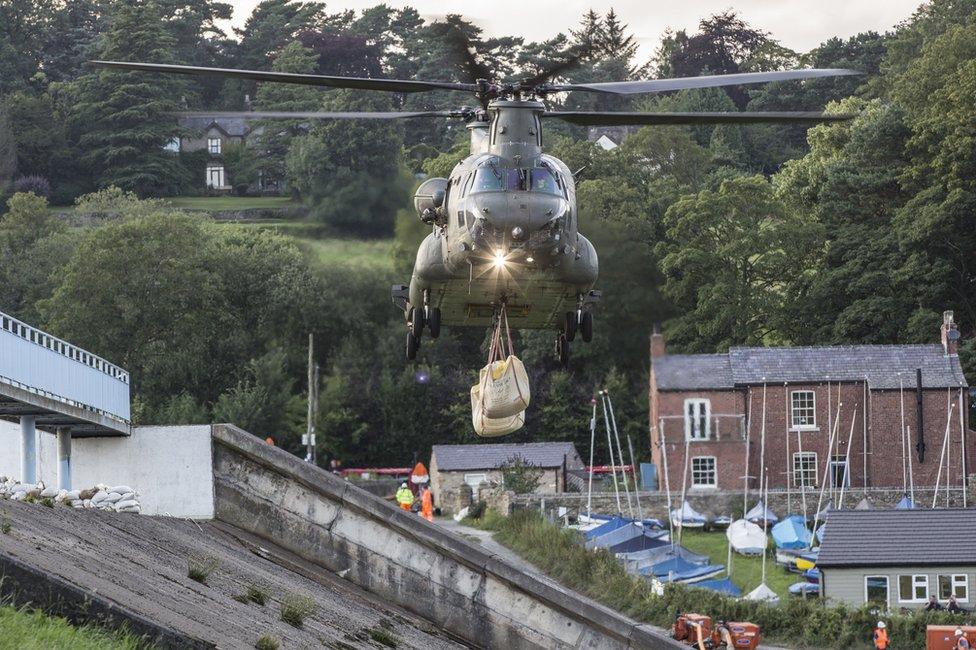
Photos taken after the collapse showed vegetation still growing out of the auxiliary spillway
Prof Balmforth described the "intermittent maintenance" of the spillway as being "particularly concerning".
"The outstanding maintenance items relating to the cleaning out and sealing of joints and open cracks should have been undertaken as soon as the Inspecting Engineer's views were known," he wrote.
"Indeed, it should not have required an inspection to have put this in place."
His report recommended owners of reservoirs "complete any outstanding maintenance of spillways urgently".
Canal and River Trust chief executive Richard Parry said: "The trust has begun preliminary work on repairing Toddbrook reservoir prior to its full restoration, and we remain fully committed to liaising closely with the local community as our repair work progresses."
Prof Balmforth made 22 recommendations to improve safety across the reservoir network and these have been accepted by the government, external.
Environment Secretary George Eustice has now asked Prof Balmforth to lead a second stage of the review, which will be a wider assessment of reservoir safety legislation.

Follow BBC East Midlands on Facebook, external, Twitter, external, or Instagram, external. Send your story ideas to eastmidsnews@bbc.co.uk, external.
- Published17 December 2019
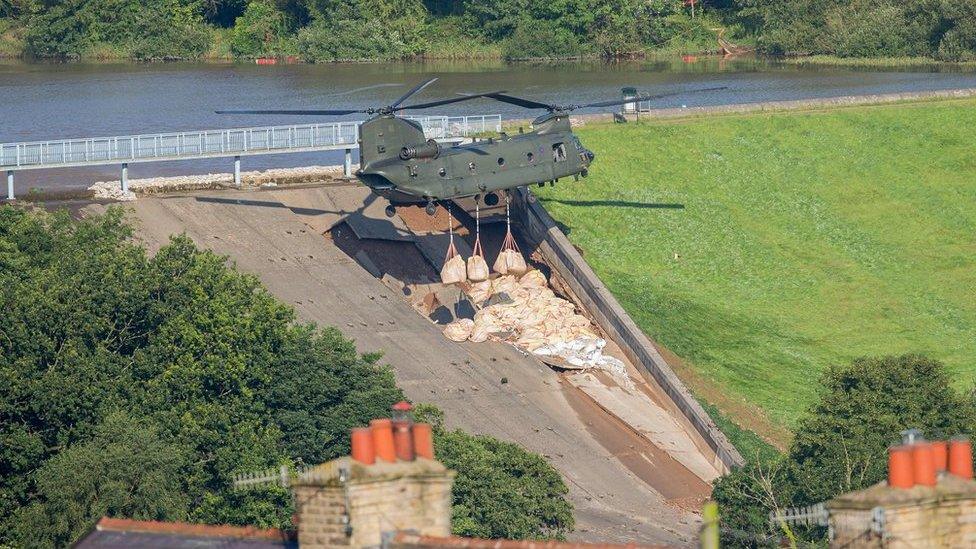
- Published1 October 2019

- Published3 September 2019
